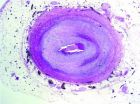Panama Canal, Panama City at risk of large earthquake, says new research
Published by the Bulletin of the Seismological Society of America
2010-11-19
(Press-News.org) Panama Canal, PanNew data suggest that the Limon and Pedro Miguel faults in Central Panama have ruptured both independently and in unison over the past 1400 years, indicating a significant seismic risk for Panama City and the Panama Canal, according to research published today by the Bulletin of the Seismological Society of America (BSSA).
The Panama Canal is undergoing expansion to allow for greater traffic of larger ships, scheduled for completion by 2014. As part of a seismic hazard characterization for the Panama Canal Authority (ACP) expansion project, Rockwell, et al., studied the geologic and geomorphic expression of the Pedro Miguel, Limon, and related faults, followed by an in-depth study into their earthquake and displacement history, critical factors in the design of the Panama Canal new locks and associated structures.
"The Pedro Miguel fault actually runs between the existing Pacific locks - the Pedro Miguel and Miraflores locks - and last ruptured in a large earthquake in 1621," said lead author Thomas K. Rockwell, professor of geology at San Diego State University. "That earthquake resulted in nearly 10 feet of displacement where the fault crosses the canal, and a similar amount of offset of the historical Camino de Cruces, the old Spanish cobblestone road that was used to haul South American gold across the isthmus. Another such earthquake today could have dramatic effects."
The Republic of Panama sits atop two colliding tectonic plates -- Central and South America -- and is internally deforming at a significant rate. The Pedro Miguel, Limon and related faults comprise a zone that extends from the southern flank of the Sierra Maestra in north central Panama southward for at least 40 km (about 25 miles) crossing the Panama Canal between the Miraflores and Pedro Miguel Locks, and extending southward offshore into the Gulf of Panama.
Paleoseismic work by Rockwell, et al., demonstrates that both the Limon and Pedro Miguel faults are seismically active, having a relatively short recurrence rate for large earthquakes, with displacements in the range of 1.5 to 3 meters (4.9 to 9.8 feet). The oldest event on the Pedro Miguel fault is estimated at 455 AD and is older than any of the events recorded for the Limon fault. However, the penultimate Pedro Miguel event and the third Limon fault event identified in this study have very similar ages at about 700 AD and may represent rupture of the entire onshore zone.
The apparent ability for these two distinct faults to fail in unison has important implications for Panama Canal. While no fault passes through or beneath any critical structures, the area and structures would be subject to significant shaking. The authors note that the close proximity of Panama City to this active fault zone, and the lack of consideration of earthquake loads in structural design codes, puts this area at high seismic risk, particularly before current buildings can be replaced with stronger, more earthquake-resistant construction.
INFORMATION:
The paper can be viewed here.
ama City at risk of large earthquake, says new research
Published by the Bulletin of the Seismological Society of America
New data suggest that the Limon and Pedro Miguel faults in Central Panama have ruptured both independently and in unison over the past 1400 years, indicating a significant seismic risk for Panama City and the Panama Canal, according to research published today by the Bulletin of the Seismological Society of America (BSSA).
The Panama Canal is undergoing expansion to allow for greater traffic of larger ships, scheduled for completion by 2014. As part of a seismic hazard characterization for the Panama Canal Authority (ACP) expansion project, Rockwell, et al., studied the geologic and geomorphic expression of the Pedro Miguel, Limon, and related faults, followed by an in-depth study into their earthquake and displacement history, critical factors in the design of the Panama Canal new locks and associated structures.
"The Pedro Miguel fault actually runs between the existing Pacific locks - the Pedro Miguel and Miraflores locks - and last ruptured in a large earthquake in 1621," said lead author Thomas K. Rockwell, professor of geology at San Diego State University. "That earthquake resulted in nearly 10 feet of displacement where the fault crosses the canal, and a similar amount of offset of the historical Camino de Cruces, the old Spanish cobblestone road that was used to haul South American gold across the isthmus. Another such earthquake today could have dramatic effects."
The Republic of Panama sits atop two colliding tectonic plates -- Central and South America -- and is internally deforming at a significant rate. The Pedro Miguel, Limon and related faults comprise a zone that extends from the southern flank of the Sierra Maestra in north central Panama southward for at least 40 km (about 25 miles) crossing the Panama Canal between the Miraflores and Pedro Miguel Locks, and extending southward offshore into the Gulf of Panama.
Paleoseismic work by Rockwell, et al., demonstrates that both the Limon and Pedro Miguel faults are seismically active, having a relatively short recurrence rate for large earthquakes, with displacements in the range of 1.5 to 3 meters (4.9 to 9.8 feet). The oldest event on the Pedro Miguel fault is estimated at 455 AD and is older than any of the events recorded for the Limon fault. However, the penultimate Pedro Miguel event and the third Limon fault event identified in this study have very similar ages at about 700 AD and may represent rupture of the entire onshore zone.
The apparent ability for these two distinct faults to fail in unison has important implications for Panama Canal. While no fault passes through or beneath any critical structures, the area and structures would be subject to significant shaking. The authors note that the close proximity of Panama City to this active fault zone, and the lack of consideration of earthquake loads in structural design codes, puts this area at high seismic risk, particularly before current buildings can be replaced with stronger, more earthquake-resistant construction.
### END
ELSE PRESS RELEASES FROM THIS DATE:
2010-11-19
Over the last 15 years, astronomers have detected nearly 500 planets orbiting stars in our cosmic neighbourhood, but none outside our Milky Way has been confirmed [1]. Now, however, a planet with a minimum mass 1.25 times that of Jupiter [2] has been discovered orbiting a star of extragalactic origin, even though the star now finds itself within our own galaxy. It is part of the so-called Helmi stream — a group of stars that originally belonged to a dwarf galaxy that was devoured by our galaxy, the Milky Way, in an act of galactic cannibalism about six to nine billion years ...
2010-11-19
Understanding the evolution of life-threatening viruses like influenza, Ebola and dengue fever, could help us to minimize their impact. New research points the way to a fossil record of viruses that have insinuated themselves into the genomes of insects and other animals, providing clues about their evolutionary history. The findings, published online on November 18 in the open-access journal PLoS Genetics, could enable scientists to elucidate general principles in virus evolution from their genetic "fossils", which in turn could inform approaches for controlling disease.
Robert ...
2010-11-19
LA JOLLA, CA – November 16, 2010 – A team led by scientists at The Scripps Research Institute has solved the structure of one of the receptors that responds to the neurotransmitter dopamine. Although dopamine transmission is essential to normal brain functioning, the biological assembly of the molecules involved in this crucial neuronal interplay had not been known—until now.
The work was reported in the November 19, 2010, issue of the journal Science.
In the new study, whose authors included collaborators from Weill Cornell Medical College, Receptos, the National Institute ...
2010-11-19
As experts gather in St Petersburg, Russia for next week's Tiger Summit, fewer than 3,200 tigers survive in the wild worldwide. More than half live in India, where they are spread over a vast area (100,000 sq km) of forest.
According to Dr Yadvendradev Jhala of the Wildlife Institute of India, lead author of the new study: "Tigers are cryptic, nocturnal and occur at low densities so they are extremely difficult to monitor. Unless we know how many tigers are left in the wild, and whether their numbers are increasing or decreasing, we will not be able to conserve them."
Until ...
2010-11-19
Cough medicine could be used as way of predicting how well individual patients metabolise tamoxifen used in the treatment of their breast cancer, according to new research presented at the 22nd EORTC-NCI-AACR [1] Symposium on Molecular Targets and Cancer Therapeutics in Berlin today (Friday).
The findings suggest that it could be possible to use cough suppressant syrup as a probe, which would enable doctors to identify patients with altered metabolism and use this information to improve individual treatment, making it more effective and reducing the chances of side-effects. ...
2010-11-19
Researchers have found that a newly developed drug, which is aimed at a particular receptor involved in the development of blood vessels that sustain tumour growth, is active in patients with advanced cancers and, in some cases, has halted the progress of the disease. The drug, ACE-041, targets a different molecular pathway to other anti-angiogenesis drugs and may provide a new option to treat cancer.
Results from a phase I clinical study of ACE-041 were presented at the 22nd EORTC-NCI-AACR [1] Symposium on Molecular Targets and Cancer Therapeutics in Berlin today (Friday). ...
2010-11-19
UCLA researchers have pinpointed the culprit behind chronic rejection of heart, lung and kidney transplants. Published in the Nov. 23 edition of Science Signaling, their findings suggest new therapeutic approaches for preventing transplant rejection and sabotaging cancer growth.
The team focused on the mechanism behind narrowing of the donor's grafted blood vessels, which blocks blood from reaching the transplanted organ. Starved of oxygen and other nutrients, the organ eventually fails, forcing the patient back on the transplant waiting list.
"Chronic rejection ...
2010-11-19
It may have been 1 billion years since plants and animals branched apart on the evolutionary tree but down through the ages they have developed strikingly similar mechanisms for detecting microbial invasions and resisting diseases.
This revelation was arrived at over a period of 15 years by teams of researchers from seemingly disparate fields who have used classical genetic studies to unravel the mysteries of disease resistance in plants and animals, according to a historical overview that will appear in the Nov. 19 issue of the journal Science.
The report, written ...
2010-11-19
STANFORD, Calif. — Universal access to lifesaving AIDS drugs — a United Nations' Millennium Development Goal that officials hoped to accomplish by 2010 — would require a staggering $15 billion annual investment from the international community at a time when the economic downturn is challenging continued funding for relief efforts, according to a new analysis by researchers at the Stanford University School of Medicine.
The study underscores the need for groups combating AIDS to rethink how they allocate scarce resources, as what was once the centerpiece of the movement ...
2010-11-19
GALVESTON, Texas — In a comprehensive global survey, researchers in Texas and England have concluded that improving the mental and physical health of inmates will improve public health.
In their article, "The health of prisoners," Seena Fazel of the University of Oxford and Jacques Baillargeon of the University of Texas Medical Branch at Galveston, write that caring for the mental and physical health of prisoners has a direct and important impact on public health that should be recognized. Their findings, to be published Online First in the British medical journal The ...
LAST 30 PRESS RELEASES:
[Press-News.org] Panama Canal, Panama City at risk of large earthquake, says new research
Published by the Bulletin of the Seismological Society of America


